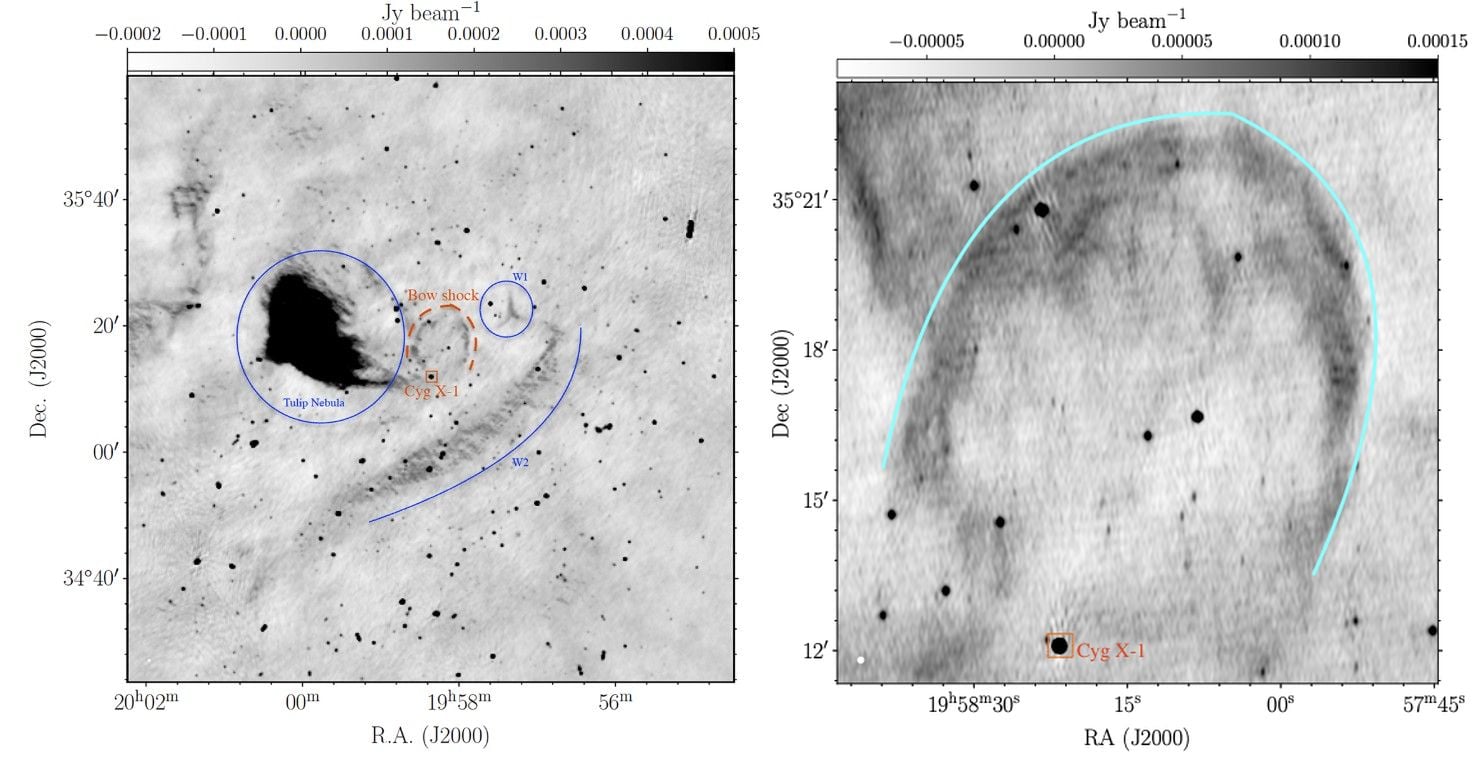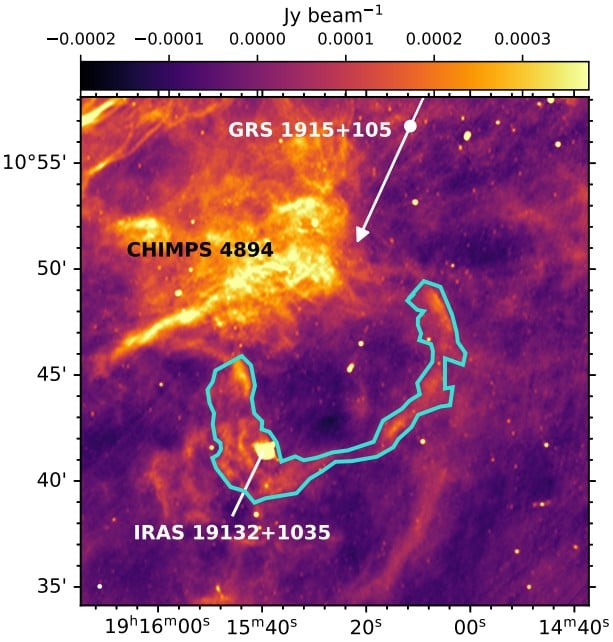It's nearly impossible to overstate the effect supermassive black holes have on their host galaxies. When actively accreting matter, they release colossal amounts of energy as winds, jets, and radiation that shape their surroundings. But stellar-mass black holes also shape their surroundings with energetic jets.
There has been abundant research into how supermassive black holes (SMBHs) affect their surroundings. The scale of their impact draws astronomers' attention because their effects are more dramatic and widespread. Their quasars are some of the most luminous objects in the entire Universe and can be seen from great distances.
Stellar-mass black holes also shape their surroundings, though astronomers haven't devoted as much time and resources to understanding how. New research shows that stellar black holes also affect their surroundings in powerful and far-reaching ways.
Two new papers in the journal Astronomy and Astrophysics examine how black holes shape their surroundings.
One is "Quantifying jet–interstellar medium interactions in Cyg X-1: Insights from dual-frequency bow shock detection with MeerKAT." Pikky Atri, an assistant professor of astrophysics at Radboud University, is the lead author.
The other is "MeerKAT discovers a jet-driven bow shock near GRS 1915+105." The lead author is Sara Motta, an astronomer at Istituto Nazionale di Astrofisica (INAF), Italy.
The papers are companions to one another, and though each paper has a different lead author, the complete list of authors is the same for both.
Both studies are based on MeerKAT, a radio telescope in South Africa. It has 64 parabolic antennas, each 13.5 meters in diameter, that act as an interferometer. It's one of the world's most sensitive radio telescopes in its centimetre wavelengths.
In the first paper, the researchers aimed MeerKAT at Cygnus X-1, a black hole with about 21 solar masses. It's about 7300 light-years away and has the distinction of being the first widely accepted black hole.
In the second paper, the researchers used MeerKAT to observe the black hole GRS 1915+105. It's a 10 to 18 solar mass black hole about 35,000 light-years away. It's a microquasar that generates a relativistic jet.
Both of these objects are black hole X-ray binaries. In these systems, the companion star transfers mass to the black hole. That matter gathers in the accretion disk, where it heats up and emits X-rays. The X-rays are how astronomers are able to observe these systems.
"These discoveries show that stellar black holes can actively sculpt their surroundings, leaving behind enormous shockwaves that tell a story spanning thousands of years," said Motta, the lead author of the first paper.
MeerKAT observations of Cygnus X-1 found a bow shock in the surrounding ISM, likely created by a dark jet invisible in radio wavelengths. The jet that created it is between 0.04 and 0.3 Myr old.
 *These images from the research show the location of Cygnus X-1 and its surroundings, including the nearby Tulip nebula and W1 and W2, two newly detected diffuse emission regions. The image on the right shows Cygnus X-1 in orange and its bow shock in cyan. Image Credit: Atri et al. 2025 A&A*
*These images from the research show the location of Cygnus X-1 and its surroundings, including the nearby Tulip nebula and W1 and W2, two newly detected diffuse emission regions. The image on the right shows Cygnus X-1 in orange and its bow shock in cyan. Image Credit: Atri et al. 2025 A&A*
"The success of these observations suggests that a systematic search for bow shocks around XRBs <X-ray binaries> is a great way to advance studies of black hole jet powers, outputs, and jet–ISM interaction and densities, and to tie inflows and outflows of accreting black hole systems," the authors write in their paper.
MeerKAT observations of GRS 1915+105 showed that it also produces a bow shock where its jet interacts with interstellar matter (ISM), creating a pressurized cavity in the ISM. The bow shock spans 30 light years, and the jet that created it has an age between 0.09 and 0.22 Myr.
"These properties suggest that the structure we observe is compressed material behind a bow shock, which may have formed at the head of a large-scale dark jet (i.e. not directly imaged in the radio band) that rams into dense ISM material, carving out a cavity in the ISM," the authors write.
 *This image shows the location of the black hole GRS 1915+105 and the direction in which its jet is pointing. IRAS 19132+1035 is a region of ionized gas and molecular clouds where the jet interacts with the ISM. The cyan outline marks the bow structure. Image Credit: Motta et al. 2025, A&A*
*This image shows the location of the black hole GRS 1915+105 and the direction in which its jet is pointing. IRAS 19132+1035 is a region of ionized gas and molecular clouds where the jet interacts with the ISM. The cyan outline marks the bow structure. Image Credit: Motta et al. 2025, A&A*
"We always thought a bow shock around GRS 1915+105 should exist, having seen something similar around Cyg X-1. However, we could not detect it, which led to a lot of confusion. Until MeerKAT discovered the bow shock near GRS 1915+105, scientists started to wonder whether bow shocks could be formed only around some black hole systems," explained Dr. Motta.
Even though these stellar-mass black holes are only cosmic shrimp compared to their supermassive counterparts, this research shows that their jets may create shockwaves throughout the Universe. These are vast structures which will only become more detectable in the future.
"Further searches with MeerKAT will help build a statistically significant sample, advancing our understanding of black hole X-ray binary jets and their impact on their local environments," the authors state in the conclusion of their second paper.
More:
Press Release:Invisible jets from tiny black holes sculpt the Galaxy
 Universe Today
Universe Today
